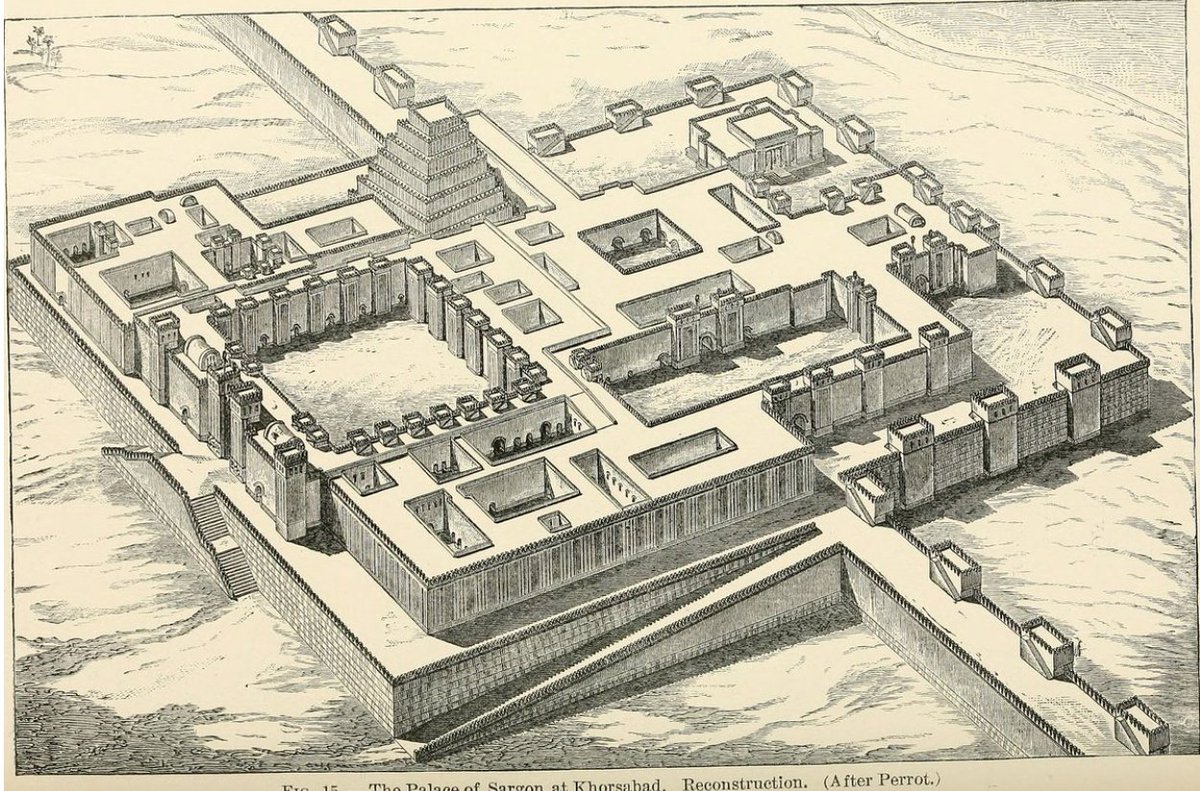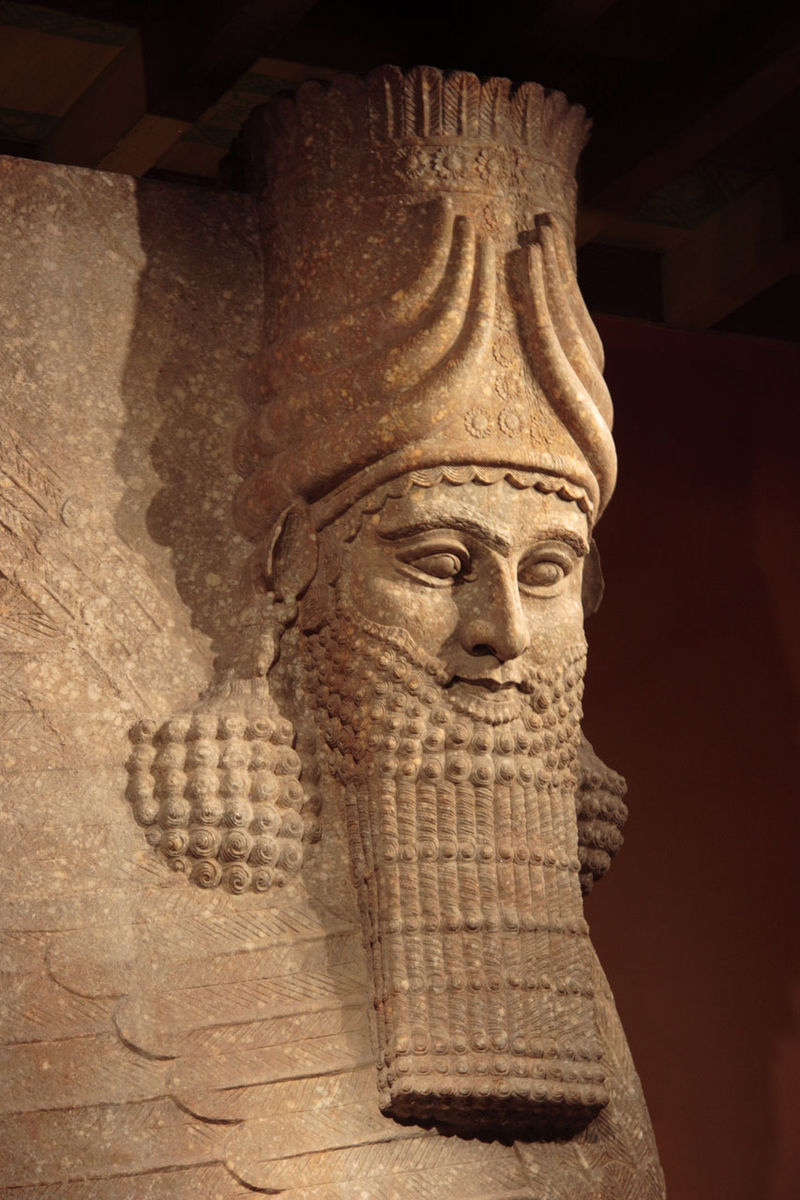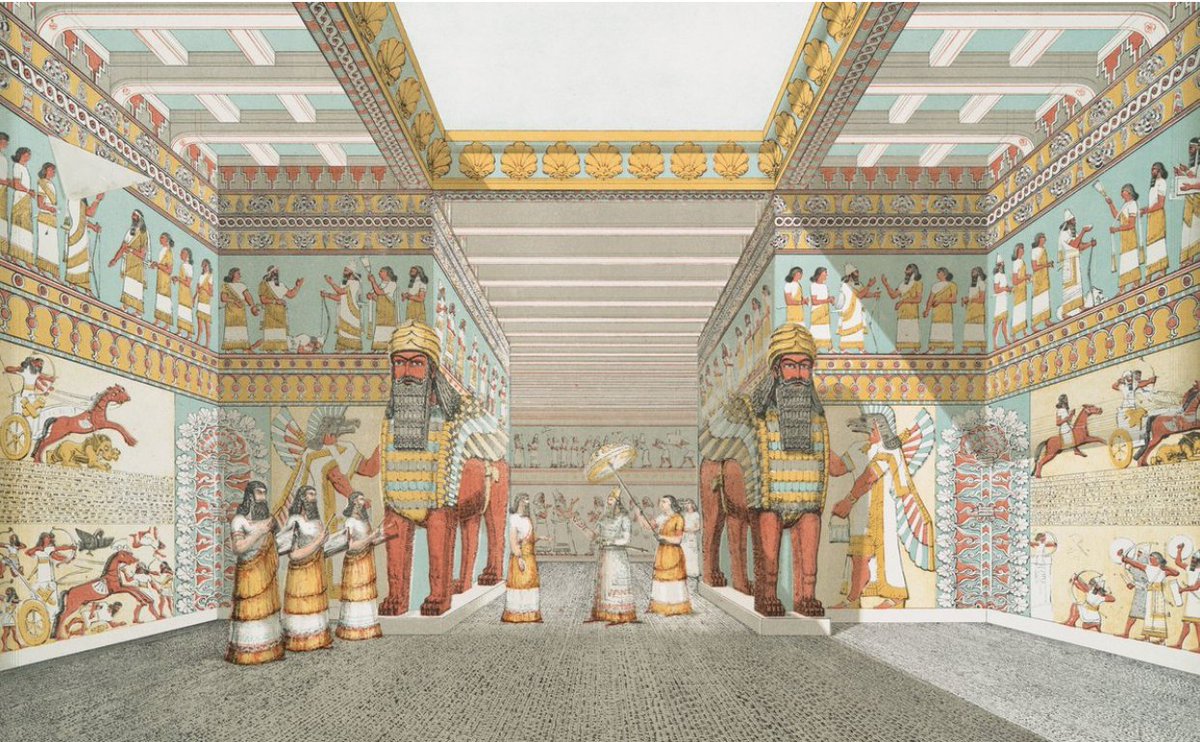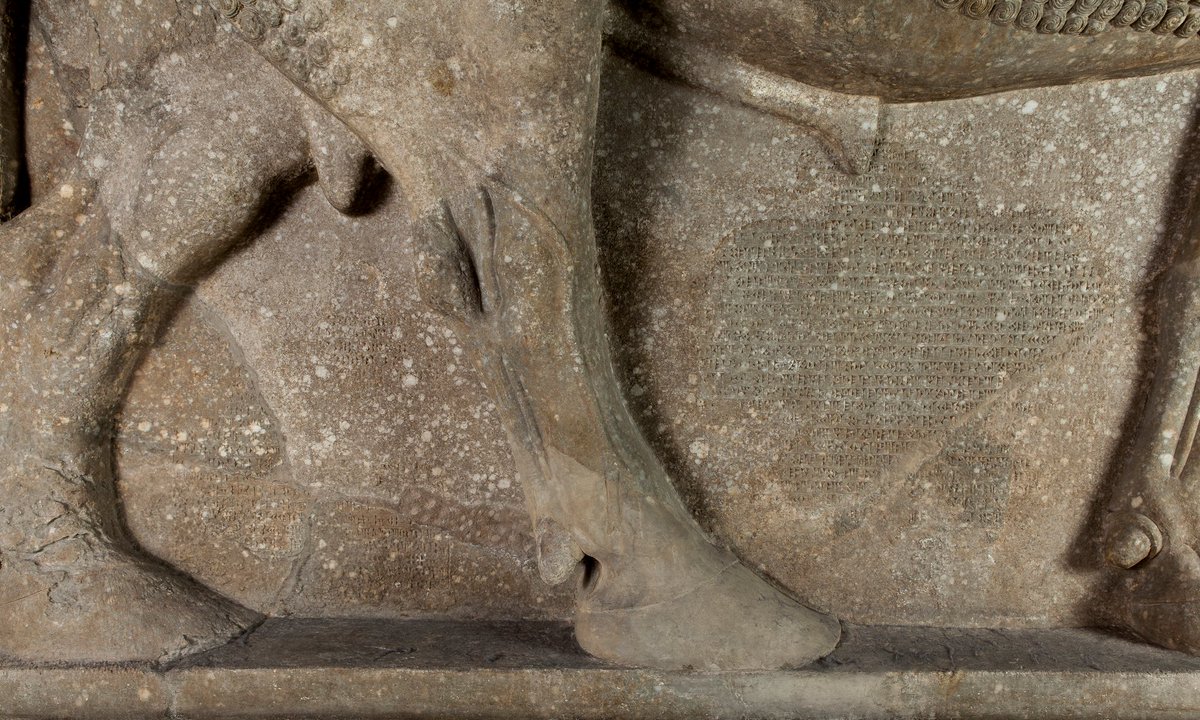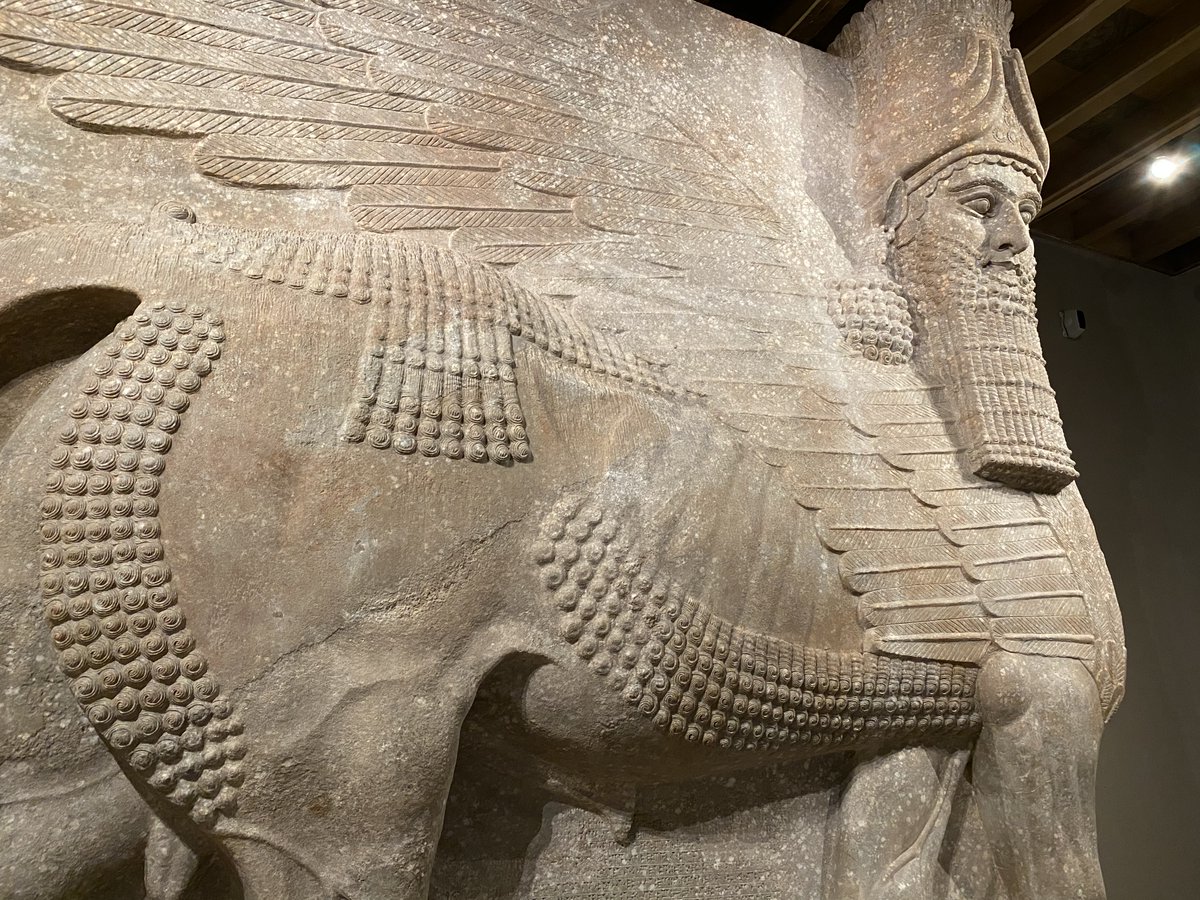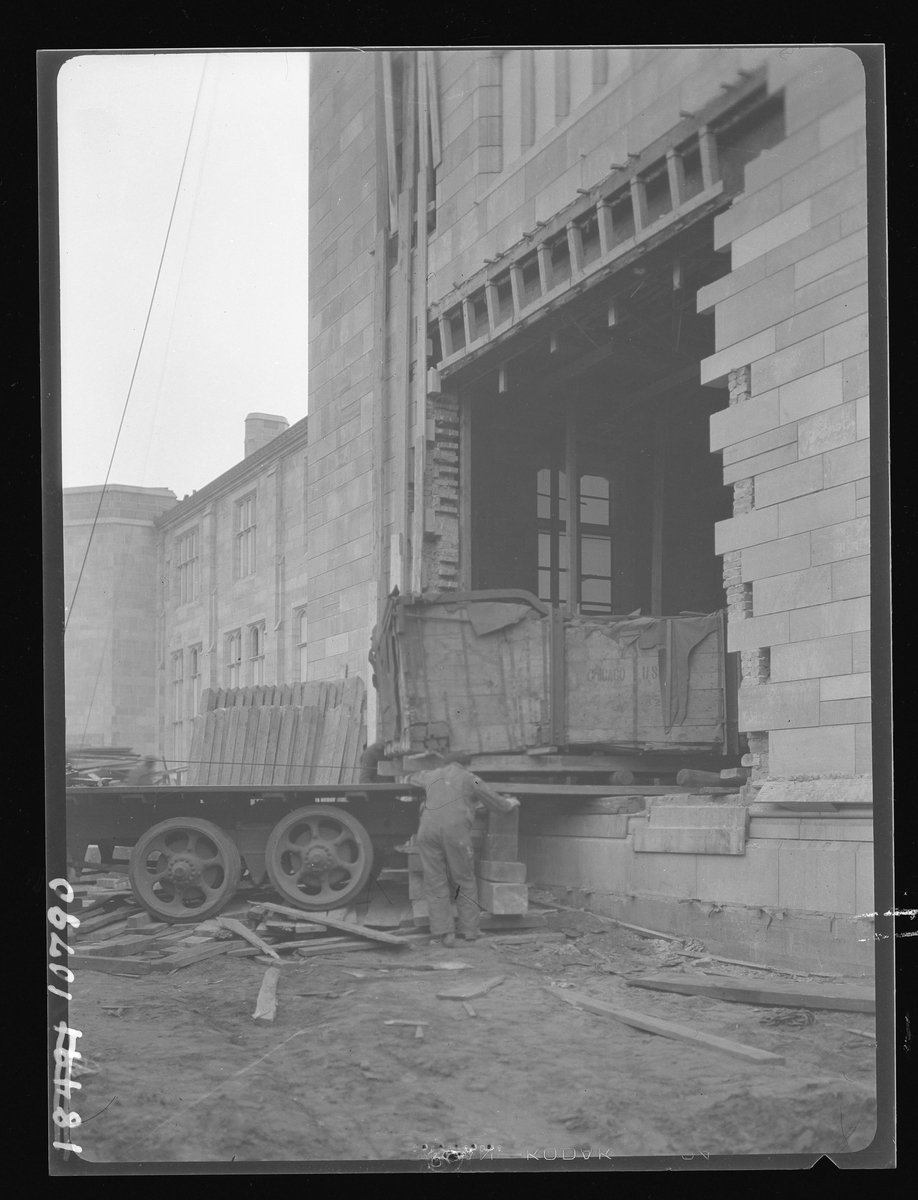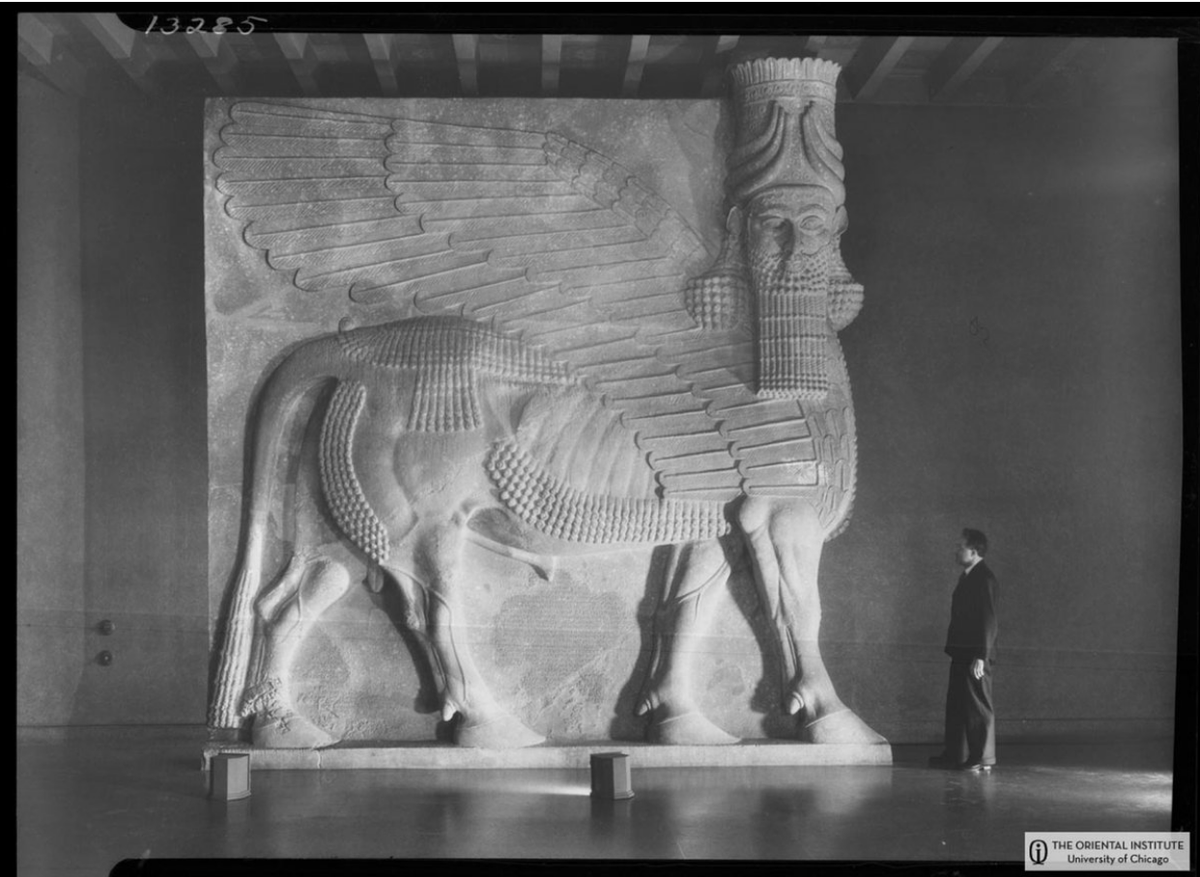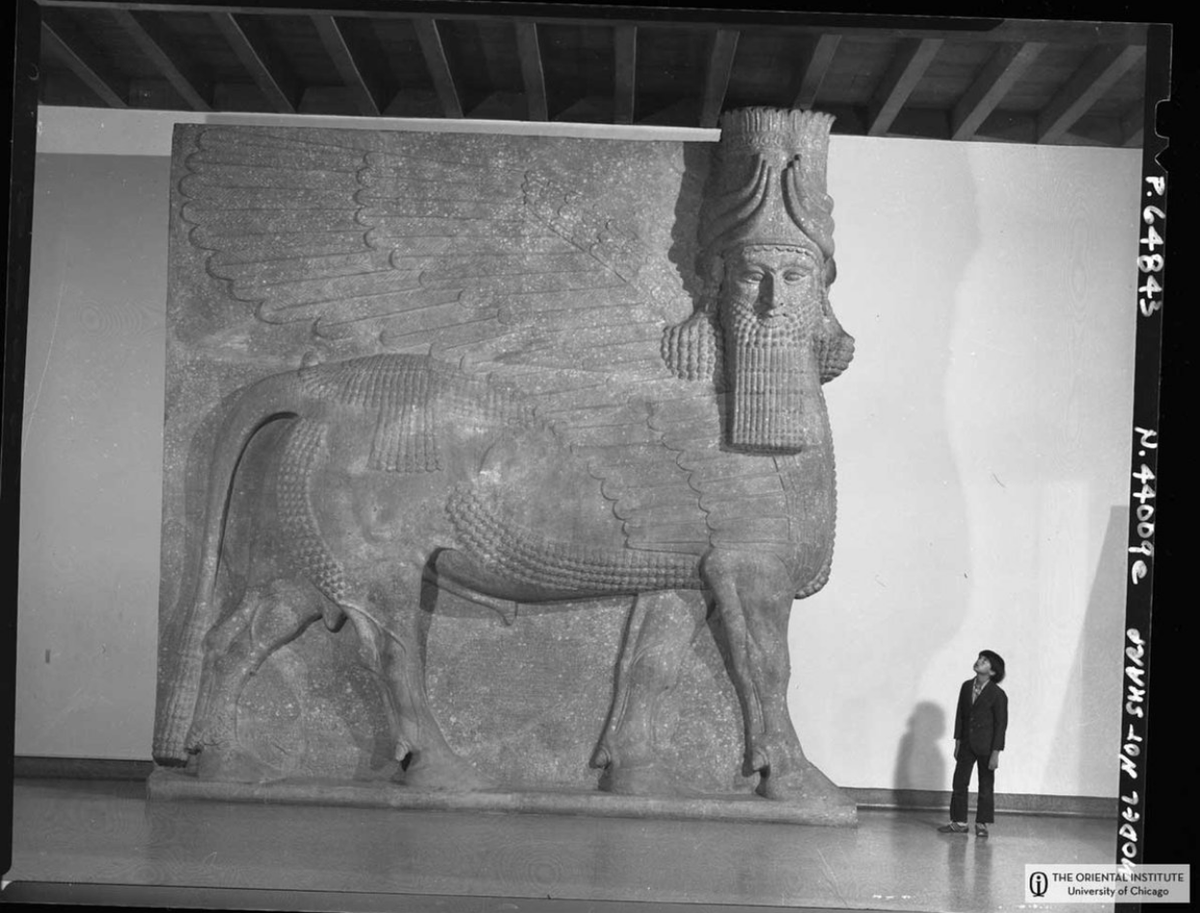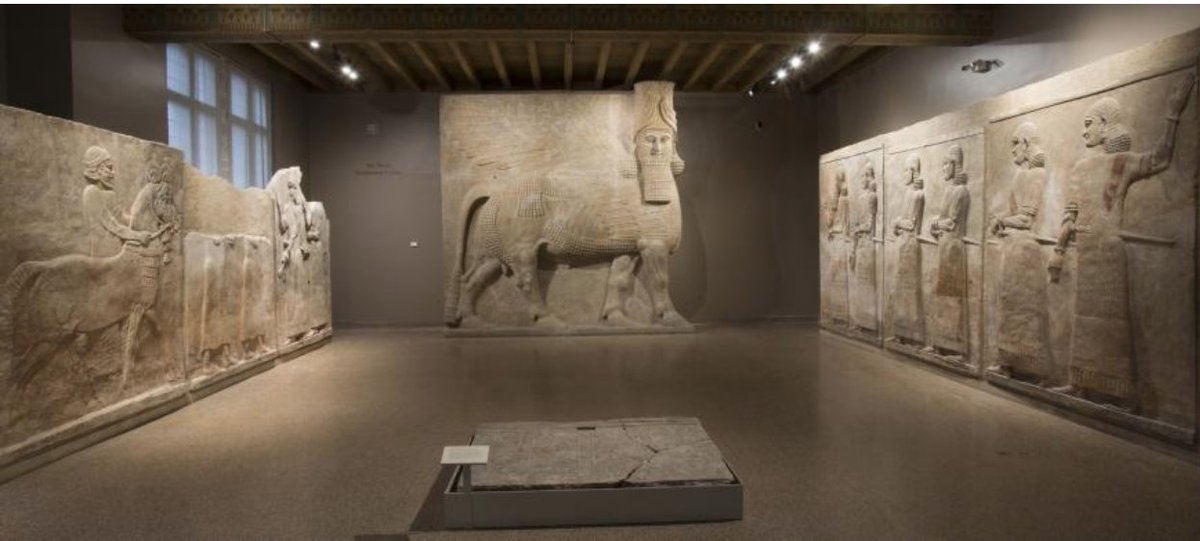I think ppl may have a difficult time understanding why the theft of artifacts by western museums is so especially damning and heartbreaking.
For that reason, I want to write a thread, again, following the life of this Lamassu. Where they were born, and where they live now.
For that reason, I want to write a thread, again, following the life of this Lamassu. Where they were born, and where they live now.
Just under 3,000 years ago, this Lamassu was born. They were by no means the first Lamassu to be granted a physical body in the kingdoms and courtyards of the kings of Assyria and abroad. This one, happened to be dedicated to the guardianship of King Šarru-kīn, or Sargon II.
Lamassu have served and protected the homes and palaces of Mesopotamia for millenia. From Sumer to Babylon to Assyria, even to Persia and farther abroad, the Lamassu stood as living, breathing, stone figures of a deity that has evolved, in different forms, for 4,000 years.
The carving of this Lamassu was likely ordered by King Sargon II. King Sargon II rose to the throne in 721 BC, and installed himself in his new capital of his empire, Dūr-Sharru-kīn, and saw fit to follow the traditions of his predecessors and enlist Lammasu as his guardians.
Built of the body of a bull, the wings of an eagle, and the face of a man, the Lammasu was an imposing but benevolent and powerful figure. Whether or not it has always been this way in its history is of no matter for the time being, they sit, watch, and learn.
The face of the Lamassu is kind and, for many, soul shatteringly human. You can see its gaze downwards, observing and taking you in as you observe them. Their lips are curved into a slight smile, or maybe a smirk; Some say they feel like they are staring at an old friend.
Neo-Assyrian reliefs document the immense effort it took to transport the weight and size of the Lamassu into the palace. Workers and slaves with ropes and platforms would painstakingly work to move the Lamassu into its new home, overseen by the king himself.
Inside Sargon II& #39;s massive palace, the Lamassu would sit along its walls and watch over everything. Diplomats bearing gifts, arguments; people would laugh, cry, and beg in front of them. Perhaps the Lamassu saw people killed, or immense charity given to those in need.
This Lamassu witnessed and felt history at its feet. In full color, they stood as shakening reminders of the power and divine that Šarru-kīn& #39;s kingdom held, and ensured that Dūr-Šarru-kīn remained a space of justice for all Assyrians.
The majesty of the Lamassu did not end here, along its feet and behind the deity itself, lie cuneiform inscriptions, telling of Šarru-kīn& #39;s wishes and boasts of his kingdom.
From John A. Brinkman& #39;s translation, 2,700 years ago, Šarru-kīn said, at the Lamassu& #39;s feet:
From John A. Brinkman& #39;s translation, 2,700 years ago, Šarru-kīn said, at the Lamassu& #39;s feet:
"There, under a single administration, I settled peoples from the four quarters of the world, of alien tongues and different speech, mountain dwellers and lowlanders, as many as the Light of the Gods (Shamash), Lord of All, has shepherded; these peoples…
I had captured at the command of the god Ashur by the power of my scepter. I commissioned native Assyrians, masters of every craft, as overseers and officials to instruct them (the settlers) in their duties as tenants and in their obligations toward god and king."
The Lamassu, a supernatural being, has 5 legs carved from gypsum. That way, from no matter what direction you are looking, all 4 of the legs of their impressive bull& #39;s body can be seen and understood. The detail is so impressive, that you can see veins, muscles, and rippling skin
In 705 BCE, Šarru-kīn II died in Anatolia on a military campaign. Without the security of his Lamassu back in Dūr-Šarru-kīn, his body was taken by enemy forces and never retrieved. Fearing for the future, his son, Sennacherib, abandoned Dūr-Šarru-kīn.
Eventually the grand palace fell into ruin. No one can say with certainty what became of Dūr-Šarru-kīn, other than it became buried and hidden for 2 thousand years.
Above ground, while the Lamassu was buried alive in dirt, Assyrians continued to live and build their lives.
Above ground, while the Lamassu was buried alive in dirt, Assyrians continued to live and build their lives.
Through the passing of the empire across many different hands for centuries, whether Persian, Greek, or Ottoman, the Lamassu stayed buried waiting for someone to restore them to their former glory as testaments to the artistry, resolve, and dignity of the Assyrian people.
In 1842, 2,547 years after the death of Šarru-kīn, news of stone sculptures east of Mosul made their way to the French. In the next couple decades, the Lamassu saw light again for the first time in thousands of years. One might think the Lamassu would be comforted.
What the light revealed was ghastly. Destruction and reckless abandon of the history of Assyria. The European & #39;archaeologists& #39; who came to dig their way through history, used appalling and harmful methods to gather their antiquities together for their eventual shipment.
In 1929, the Lamassu would be greeted by ropes and palettes much like those that brought them into Dūr-Šarru-kīn. Perhaps the Lamassu was excited to be moved into another palace, to guard another king, to stand a steward for the next millenia.
The next "king" the Lamassu was to serve was not Assyrian. Talk around the deity undoubtedly consisted of much of what the famous imperialist Austen Henry Layard boasted of:
"The unequalled position and resources [of Mesopotamia]... must, in the course of time...
"The unequalled position and resources [of Mesopotamia]... must, in the course of time...
again render it as rich and populous [as it once was]... I trust that it may be the destiny of England to bring about that change, of such vast importance and os such incalculable benefit to peace, commerce, and civilisation"
I& #39;m sure the Lamassu, upon hearing talk like this, would be impressed to hear that its new king, whether that be England, France, or America, is so "committed" to the restoration of Assyria.
That is, until people like Layard continue in their explanation:
That is, until people like Layard continue in their explanation:
"... it would indeed be a matter of deep regret if the English Government declined to undertake such a work which would place additional materials in the hands of the learned of Europe"
Although claiming "protection," Layard and the British Foreign Office more clearly explain their motives here: "Nor can any thing have a more direct tendency to teach the NATIVES some RESPECT for the remains of great works of art executed by the early OCCUPIERS of their country..
than LEADING them to believe that Europeans desire to possess these remains not because of any... value attached to them, but because of their connection with ancient nations and language... if by any means, the general... prosperity of the human race is to be attained"
Although these words were spoken to and about other Lamassu, the main Lamassu of our story is then sealed into darkness again in boxes, to be shipped to Chicago.
The Lamassu is no longer whole. It is split into pieces because of both erosion and ease of transport. The body of the Lamassu will, to be whole again, be repaired once it arrives in America.
The people in Chicago, through the muffled slats of the wooden box, keep referring to the Lamassu& #39;s transport as a "generous gift," "generous gift." But from who, to whom?
The cultural authority of Iraq at this time is run and commanded by the British.
Who truly gave consent to box and ship the Lamassu away? Can consent ever be given?
Who truly gave consent to box and ship the Lamassu away? Can consent ever be given?
Upon arriving in Chicago, the Lamassu already being severed in pieces, the boxes are loaded into a museum, and the Lamassu is put back together, and cemented into the ground. Never to move again.
Instead of guarding another palace, the Lamassu is left to stare at the severed and mutilated remains of Dūr-Šarru-kīn in an American museum. Every single relief has lost its color and some definition. The throne room is gone.
What& #39;s left is an empty indoor courtyard labeled in foreign English. People come in and out of the room, with leaders explaining to the Lamassu that its here for appreciation and protection. Where else had the Lamassu heard that before? And why doesn& #39;t it feel true?
While this is happening, the descendants of Šarru-kīn, the Assyrians, are then denied visas. They are denied education. They are massacred and forced out of their homes. Told by their oppressors that they have no history, or that their history doesn& #39;t belong to them.
And it& #39;s because it has been taken. So much history lies in Chicago and London, Paris and Berlin, left to sit in the "protection" of being hidden away from so many Assyrians to ever see their history with their own eyes. This is the "protection" they spoke of, Lamassu.
So there the Lamassu still sits. In Chicago, still smiling. Still waiting for the day ropes might come again, and beckon them back to where they belong. For now, people forget this, and stare at the pretty gypsum.
And they tell people who defend the Lamassu to shut up, at least the Lamassu is "protected" here. It& #39;s "safe." I guess, for now, that last part is true.

 Read on Twitter
Read on Twitter
